
1
REVISED: 4-07-07

2
Olympus M1200 Operating Manual
TABLE OF CONTENTS
TOPIC PAGE #
• Introduction 3
• Technical Specifications 4
• Optional Equipment 5
SECTION 1: Operational Safety
• Electrical Safety 6
• Mechanical Safety 7
SECTION 2: Operation Procedures
• Electrical Supply 8
• Water Supply & Chemicals 9
• Chemical Metering Tips 10
• Water Supply 11
• Pump Priming 12
• Solution & Vacuum Hoses 13
• Pump-Out System 15
• Pressure Adjustments 16
• Shutdown Procedures 17
• Troubleshooting 18-20
• Solution Flow Path 21
• Wiring Diagrams 22-23
SECTION 3: Maintenance/ Technical
• Maintenance 25
• Drawings & Parts Lists
o Pump 35
o Auto-Fill 37
o Pressure Regulator 38
o Solution Tank 39
o Waste Tank 41
o Base & Vacuum System 43
o Base, Pumps, Components 44
• Warranty 45

3
Introduction
Congratulations on your purchase of the Hydro-Force Olympus M1200. The
M1200 is designed to give truckmount-level performance in a portable machine
that combines versatility with ease of transport. Years of experience, engineering,
and planning have gone into the design and manufacturing of the M1200. We take
a great deal of pride in the M1200; our goal is no less than your complete
satisfaction.
This manual will provide users with the knowledge required to operate the
Olympus M1200 safely, to understand how to properly operate and maintain the
machine, and to ensure that the equipment operates at its maximum performance
level.
All users must read and understand this manual completely before
operating the machine.
Always maintain this manual in legible condition adjacent to the Olympus M1200,
or place in a secure location for future reference.
Any questions pertaining to the operating or servicing of this unit should be
directed to your nearest Hydro-Force distributor.
This manual is written specifically for the Olympus M1200 portable extractor
units manufactured by:
Hydro-Force
542 W Confluence Ave.
Salt Lake City, UT 84123
801-268-2673
801-268-3856 FAX
Information in this manual is subject to change without notice and does not
represent a commitment on the part of Hydro-Force or its parent or affiliated
companies.

4
Technical Specifications
M1200 High Pressure Extractor
Height: 38”
Length: 28”
Width: 19-1/2”
Weight: 141 lbs.
Solution Tank Capacity: 12 gallon
Recovery Tank Capacity: 12 gallon
Solution Pump: Pump-Tec #356 pump with 1-1/2 HP Motor
0-1200 psi – 2.2 gpm
Vacuum Motors: Two AMETEK Lamb 5.7” diameter – tangential discharge
One two stage & One three stage – Mounted in series
Pump-out Pump: Little Giant 120VAC 8-20 gpm
Maximum psi 11.4 – Maximum pumping height 26 ft.
Power Draw: Cord #1 – 17.22amp wide open / 11.54amp full load
Cord #2 – 16.25Amp max total (11.25 Pump /5.00 Waste Pump)
Standard Equipment
M1200 High Pressure Extractor
Vacuum Hose: 25’ X 1-1/2” with 1-1/2” cuff & 2” cuff
4’ x 1-1/2” with 2” cuffs
Hydro-Filter Inline Filter - AC11
HP Solution Hose: 25’ x 1/4” with 1/4” male / female quick connects
Pump Priming Hose: 12” x 1/4” with 1/4” male quick connect
Auto Fill System with chemical draw:
Metering Tip Kit: 14 different tips for changing chemical dilution rate
Water Supply Hose: 50’ x 3/8” with 1/4” female quick connect &
female garden hose fitting
Auto Pump-out System:
Pump-out Hose: 50’ x 3/4” with male & female garden hose fittings
Power Cords: 2 – 50’ x 12gauge with male & female plug ends

5
Additional / Optional Equipment
Carpet Wand: AW29
SX-12 Hard Surface Tool: AW104
SX-7 Tile & Grout Tool: AW101
Gekko Tile & Grout Wand: AR54
Gekko Hand Tool: AR52
Gekko SX-7 Tool: AW102
1-1/2” Vacuum Hose: (Sold per foot – No cuffs) AH36
2” cuff for 1-1/2” Vac Hose: AH46
1-1/2” cuff for 1-1/2” Vac Hose: AH42
2” Hose Connector PVC: AH76
1-1/2” Hose Connector PVC: AH74
HP Solution Hose: (Does not include Quick Connects) AH79D
1/4” Male Quick Connect: 100009
1/4” Female Quick Connect: 100008
Pump-out Hose: AH65
Replacement Bags for Hydro-Filter: AC11A
Metering Tip Kit: PDE001
AW29 AW104
AW101
AR52
AR54

6
Safety
CAUTION! This machine is an electrical appliance. Care must be
taken to reduce the risk of electrical shock.
• READ AND UNDERSTAND ALL INSTRUCTIONS BEFORE OPERATING THE M1200.
• To reduce the risk of property damage or injury, repairs to electrical systems should only be performed by
experienced technicians. Contact your distributor for assistance.
• Unplug machine power cord from outlet before performing any repairs on the extractor.
• Plug unit into grounded outlets only. Do not remove ground prong from plug. Use of a Ground Fault
Interrupting (GFI) device will reduce the risk of electrical shock.
• Do not use the M1200 outdoors, in standing water or on wet surfaces.
• Do not store the M1200 in wet conditions.
• If extractor is leaking, unplug machine power cords from outlets before approaching or touching machine.
• Do not unplug power cord by pulling on the cord. Grasp the plug when unplugging the cord.
• Do not pull the extractor by the cord.
• If cord or plug is damaged, do not use cord. Replace with new cord or repair as needed before use.
• The power cords used must be able to handle an electrical load of 20amps each.
• The two power cords must be plugged into separate circuits during operation. Power Cord #1 must be on a
20amp circuit to use both vacuums. Power Cord #2 can be on a 15amp if the Auto Pump-out is not used or a
20amp circuit if it is used. The use of a Breaker Buddy (Hydro-Force part number AX49) will ensure that the
two cords are operating on different circuits (see page 8 for details.)
Sectio
n
1

7
WARNING! This machine must be protected from conditions which may
damage the pump, tank, hoses and other components.
• Freezing of water in this machine will cause serious damage. The M1200, solution hoses, and tools must
be protected from freezing temperature. Store, transport, and use this equipment only in temperatures well
above freezing. (32ºF or 0ºC). If you suspect the M1200 has been frozen, do not plug in or turn on machine
until you are sure it has thawed completely.
• If the equipment cannot be stored or transported in a warm environment, it can be guarded from freezing by
running an anti-freeze solution through the incoming water lines, chemical feed system, solution pump, solution
lines, tools and pump-out pump. The machine is filled at the factory with anti-freeze to eliminate damage during
shipment in cold weather.
o The anti-freeze solution must be completely flushed from the machine before it is returned to service.
• The M1200 must not be used to pick up flammable or combustible materials or used in areas where these
materials may be present.
• Solvent-based or water-based solutions containing solvents may damage the pump, hoses, and other
components. Do not assume chemical compatibility. Contact your distributor or Hydro-Force if you have
questions regarding the compatibility of your chemicals with the machine.
• Do not clean with solutions that are at temperatures above 180ºF.
• Rinse the solution tank, chemical system, and pump with fresh water after each day’s use.
• Do not allow pump to run dry. Always maintain adequate solution level to supply solution pump.
• HP hoses may rupture if worn or damaged. Do not use HP solution hoses if hose covering is cut, bulging, or
otherwise damaged. Examine HP solution hoses daily and replace or repair hoses as needed.
• Use Hydro-Filter and clean the recovery tank daily to keep pump-out pump from becoming clogged. Store the
M1200 with the recovery tank lid open.
• Keep Vacuum Inlet Filter clean and check float ball for proper operation. Do not operate the M1200 without
the Vacuum Inlet Filter in place. Use defoamer to eliminate foam build-up during cleaning and prevent
foam/moisture from entering vacuums.
***Use common sense to protect yourself and others while using this equipment.***
• Keep pets and children away from the machine when in use.
• Keep all body parts, hair, and loose clothing away from openings and moving parts. Always wear appropriate
clothing and safety equipment when operating unit.
• Use extra care when cleaning on stairs. Wet carpet on stairs can be slippery.
• Do not move the M1200 up or down stairs when tanks are full of water. Drain solution and recovery tanks
before moving unit up or down stairs. Lift using only the appropriate handles.
• Water may be spilled, drip, or be exhausted from vacuums during operation. Place unit in area where water will
not cause damage or use drop cloth to protect surfaces.

8
Operation Procedures
Knowledge of the proper operation of the M1200 is required to ensure user
safety and efficient performance of the extractor.
SET UP AND OPERATION
1. Electrical Cords:
Two 50’ power cords are supplied with the Olympus M1200. Cord #1 powers both vacuum motors; Cord
#2 powers the high pressure solution pump and the waste pump. The amperage required by each cord
requires that the two cords be plugged into separate circuits:
• Cord #1 (right side) will require a 20amp circuit to run both vacuums.
• Cord #2 (left side) can be plugged into a 15 amp circuit if Auto Pump-out is not used or a 20 amp
circuit if the Auto Pump-out is used.
20amp circuits are usually found in kitchens and bathrooms.
Plug the two power cords into two outlets from different circuits.
If you are not sure if you are connected to separate circuits, use a Breaker Buddy , included with your
machine, to test your circuits in the following manner:
• Plug the cords into the two outlets being tested, and then plug the two cords into your machine.
• If the green Breaker Buddy indicator light fails to light, you may be on the same circuit and must
select a different plug for one of the cords.
• If the green indicator light comes on, you are plugged into two different circuits, and may proceed
with your set-up procedure.
If a circuit breaker trips during operation, reset the breaker and move the cord to another outlet as needed.
Sectio
n
2
Power Cord – AX33
50’ – 12 gauge M-F Plugs
Cord #2
Cord #1

9
2A. Water Supply & Chemical Mixing– Manual Fill:
• Pour up to 12 gallons of hot water into the solution tank at the front of the machine. The water
temperature cannot exceed 180°F.
• Measure and add the appropriate amount of the desired liquid chemical to the water in the solution tank.
The amount of chemical will vary depending on the type of chemical used, the amount of water in the
tank, and the material being cleaned; consult the chemical packaging for specific mixture ratios.
• Powdered chemicals should be dissolved in water before adding to the water in the solution tank.
DO NOT RUN OUT OF WATER WHILE USING THE MACHINE! Ensure that the tank
contains enough water to complete each job. If the water level is low: stop cleaning, turn off the
pump, and refill the tank. Running the pump dry will damage the pump and void the warranty.
2B. Water Supply & Chemical Dilution – Auto-Fill:
• The chemical dilution rate is controlled by the metering tip, and the dilution rate can only be changed by
changing the metering tip (See “How to Change the Metering Tip” on Page 10 for instructions.)
Chemical Feed Setup:
• Remove the chemical feed hose from the solution tank.
• Place the end of the hose into a container of liquid chemical.
• If the tip is removed, and the proportioning system operated with no tip, the dilution rate will be 8:1 (the
equivalent to adding 16-1/4oz of chemical to each gallon of water.)
• The standard tip included with the M1200 is the turquoise tip with a dilution rate of 256:1. This means
that for each gallon of water flowing into the machine, 1/2 ounce of chemical will be added.
• If a fresh water rinse with no chemical is desired, simply leave the chemical feed hose inside the
solution tank.
Pro
p
ortionin
g
Valve
Chemical Feed Hose
Add appropriate amount of chemical to water
in solution tank
Pour appropriate amount of hot water into
solution tank

10
How To Change the Metering Tip:
• Remove the chemical feed hose from the barb on the side of the proportioning valve.
• Unscrew and remove the old tip.
• Screw in the proper tip for your chemical tip and place the hose back on the barb
Metering Tip Kit (Hydro-Force Item# PDE001) contains 14 different colored metering tips, allowing
dilution rates from 11:1 up to 427:1. Refer to the chart below to select the tip that meets the dilution rate for
your chemical application.
• For example: if you require 1-1/2 ounces of chemical per gallon of water, change to the red metering tip
with the dilution rate of 85:1.
• The dilution rates are based on chemicals with water-like viscosity. Thicker (more viscous) chemicals will
dilute at a different rate.
• For powdered chemicals, a liquid concentrate must be made. Mix the concentrate according to the
manufacturer’s directions, and then select the appropriate metering tip.
• Contact your distributor or Hydro-Force if you have questions about your chemical.
Metering Tip Application Chart:
Metering Tip Kit – PDE001
Turquoise Tip
Dilution 256 - 1
Red Tip
Dilution 85 - 1
TIP
COLOR
CHEMICAL DILUTION RATES
OZ / GAL (RATIO)
TAN 0.30 (427:1)
ORANGE 0.40 (320:1)
TURQUOISE 0.50 (256:1)
PINK 0.75 (170:1)
LIGHT BLUE 1.00 (128:1)
BROWN 1.12 (114:1)
RED 1.50 (85:1)
WHITE 1.75 (73:1)
GREEN 2.00 (64:1)
BLUE 2.50 (51:1)
YELLOW 3.75 (34:1)
BLACK 5.00 (26:1)
PURPLE 8.50 (15:1)
GRAY 11.50 (11:1)
NO TIP 16.25 (8:1)
Pro
p
ortionin
g
Valve

11
Water Supply:
• Once the correct metering tip is in place:
o Connect the Auto-Fill Water Supply Hose to the water inlet (the male quick-connect on the front
of the machine.)
o Connect the other end of the hose to a water faucet, and then turn on the water.
• Hot water can be used as long as the temperature does not exceed 180°F.
• Faucet adapter kits (Hydro-Force item #AX21 & AX22) are available that allow connection to different
types of faucets if needed.
To adjust the water level in the solution tank:
• Turn off the water supply.
• Adjust the length of the chain connecting the float bottle to the float valve.
• Snap the beaded chain off the connector on the valve.
o Move the bottle down to decrease the water level.
o Move the bottle up to increase the water level.
• Snap the chain back into the connector.
• Turn the water supply back on.
If the chemical is not drawing, or if the tank is not filling
or is overflowing, refer to the trouble shooting guide, or
contact your distributor for assistance.
Connect the Auto-Fill Water Supply Hose to Solution Inlet
(Male quick connect on the front of the machine.)
3/8” id X 25’ with F Quick Connect & F Garden Hose Fitting
Chain
Float Valve
Float Bottle
Connect the Auto-Fill Water Supply Hose to a
faucet and turn on the water
Chemical
Feed Hose

12
3. Priming the High-Pressure Pump:
Once water is in the solution tank, the high-pressure solution pump must be primed:
• There is a prime valve located on the front lower portion of the machine.
• Turn on both vacuums and the water pump. Press the priming lever for a few seconds while you
block off the vacuum inlet with your hand. The Vacuum will pull solution through the pump and
prime valve into the vacuum tank.
• Let off the prime valve and your pump is then primed. As long as there is solution in the tank the
pump should remain primed.
• After priming, turn off the pump and step on the primer valve to relieve the pressure in the line.
If the pump still does not prime, or if flow is low or unsteady, check the hose from the solution tank to the
pump (as well as the inline filter) for clogging, kinks, or restrictions. Clean or replace hose and/or filter
and repeat the priming procedure.
If you are having trouble with the pump, refer to the trouble shooting guide or contact your distributor for
advice or assistance.
Prime Valve

13
4. Connection of Solution Hose:
Connect the high pressure solution hose to the solution outlet (female quick connect on the front of the
machine). Connect the other end of the hose to the male quick connect on the cleaning tool. When you are
ready to start cleaning, turn the solution pump switch to the ON position
5. Connection of Vacuum Hoses:
There are three components used to connect the cleaning tool to the vacuums and recovery tank:
1. A short 4’ vacuum hose: Connected to the vacuum barb on the front of the machine and to the
outlet side of the Hydro Filter.
2. A Hydro Filter
3. A 25’ Vacuum Hose: The 2” cuff on the 25’ vacuum hose is connected to the inlet side of the hydro
filter. The other end with the 1-1/2” cuff is connected to the cleaning tool.
When ready to begin cleaning, turn both vacuum switches to the ON position. While the M1200 can be
operated with only one vacuum for cleaning delicate fabrics, in most situations you will turn both vacuum
switches ON.
Optional Accessories
Foam Downer (included):
A key problem with portable extractors is that they have small tanks where foam dissipates slowly. If you
have had issues with foam or are anticipating foaming problems, you will want to setup your Foam Downer.
Hydro-Filter – AC11
Short Vacuum Hose
1
-
1/2
”
x4
’
with 2
”
cuffs
Vacuum Hose
1-1/2” x 25’ with 2” & 1-1/2” cuffs
Connect the male end of the HP Solution Hose
Assembly to the female solution outlet fitting on
the machine. Connect the female end to the
cleaning tool.
HP Solution Hose Assembly – AH79D
1/4” id X 25’ with M-F Quick Connects

14
Foam can decrease vacuum lift and eventually ruin the vac motor. The Foam Downer kills foam as waste
water enters the machine. It uses a hook to hang a jug of liquid defoamer from your portable. Foam Downer
injects defoamer into the vac hose. Your portable suffers no power loss from foam and your motor suffers
no damage.
• Mounts and is ready to use in seconds
• Uses defoamer very economically
• NO LABOR is involved to spray or spread defoamer – it’s all automatic
• Keeps silicone defoamers off the floor where they can deposit and cause soiling and problems later
The Foam Downer is an attachment that draws a small amount of defoamer in a constant slow flow into the
waste tank of Olympus through its vacuum system. We recommend diluting a gallon at 1 to 32 and open the
needle nose valve up one half turn as a starting place. If not sufficient you can decrease the dilution, or open
up the valve more. At one half turn it will take approximately one half hour to drain the gallon of diluted
defoamer. The hose hook holds the gallon of diluted defoamer on the front of the Olympus as shown in the
pictures.
Hose Hook:
Not only is this necessary for your Foam Downer, you won’t
believe how helpful they can be to keep your hoses off the ground.
Hose Hook – AH95

15
6. Connection of Pump-out Hose:
The pump-out hose is a 50’ section of 3/4” garden hose.
• Remove the cap from the pump-out outlet fitting on the back of the machine.
• Connect the pump-out hose to the outlet fitting.
• Place the other end of the hose in a commode or drain connected to the sanitary sewer system.
• Secure hose end to prevent movement during pumping.
Use defoamer to prevent foam build-up in recovery tank during cleaning and to keep foam/moisture
from entering vacuums.
When ready to begin cleaning, turn the waste pump switch to the ON position.
• Do not turn on waste pump switch unless pump-out hose is connected and has been routed
to a proper drain.
If not using the waste pump-out, the pump-out hose does not need to be connected. When the recovery tank
fills during cleaning, the float ball assembly in the vacuum inlet filter will rise and will automatically shut off
the vacuum air flow to prevent the recovery tank from overfilling and waste water from getting into the
vacuums. When this occurs:
• Immediately shut off the vacuum switches.
• Drain the recovery tank.
o Turn off the pump switch while draining the tank.
o Turn pump switch back upon resumption of cleaning.
• Close the drain valve and turn the vacuum switches back on when ready to resume cleaning.
If the pump-out or vacuum shutoff is not working properly, refer to the trouble shooting guide or contact
your distributor for advice or assistance.
Pump-out Hose – AH65
3/4” id X 50’ with M-F Garden Hose Fittings
Connect the Female Garden Hose Fitting end of the
Pump-out Hose to the outlet fitting on the back of the
recovery tank. Place the other end of the pump-out
hose in a sanitary drain.
Float Shutoff Assembly – NM5037
Draining the Recovery
T
ank

16
7. Pressure Adjustment:
When the high-pressure solution pump is on and primed, pressure will show on the gauge only while the tool
is being sprayed. When the tool is sprayed the gauge will display the pressure being delivered to the tool.
When the tool is not being sprayed the gauge will return to zero.
• To decrease the pressure, turn the black knob on the pressure regulator to the left (counter-
clockwise.)
• To increase the pressure, turn the black knob on the pressure regulator to the right (clockwise.)
• To adjust pressure to your tool and surface requirements:
o Spray the tool.
o Check the pressure on the gauge.
o Re-adjust as needed to set the machine at the desired pressure.
o Choose the pressure setting that best meets your type of cleaning.
Pressure gauge
To increase the solution pressure, turn the
regulator knob clockwise.
To decrease the solution pressure, turn the
regulator knob counter-clockwise.
The maximum pressure setting is 1200psi;
however, the highest pressure attained is
dependent on the amount of water flow at the
tool:
• Smaller jets and lower flow will allow for
higher pressure at the tool.
• Larger jets and higher flow will lower the
maximum pressure attained at the tool.
The desired setting will depend on the type of
cleaning and tool used. For example:
• Carpet Cleaning with 2-jet AW29 wand: 400psi
• Tile Cleaning with SX-12: 1000psi
If adjusting or maintaining pressure becomes a
problem, refer to the trouble shooting guide or
contact your distributor for advice or assistance.

17
Shutdown Procedures:
• If using the auto-fill system, turn the water supply off before finishing each job. This will allow use of the
water and chemical already in the tank, and will reduce the amount of excess water to be disposed of later.
• When finished cleaning, turn off all switches.
• If the auto-fill system was used and there is still water in the solution tank, push the float down to release
the water inlet hose pressure before disconnecting the hose from the faucet. Disconnect the water inlet
hose from the quick-connect on the front of the machine.
• Disconnect the solution hose and vacuum hose from the cleaning tool. Pull valve trigger to release
pressure from the hose before disconnecting solution hose from cleaning tool.
• Disconnect the Hydro-Filter from the vacuum hoses and clean the
filter as needed. Replacement filter bags are available (AC11A.)
• Disconnect the vacuum hose and solution hose from the machine.
• If water remains in the solution tank, use the short
vacuum hose and vacuum the excess water from the tank.
• If the auto-fill system was utilized, place the chemical feed
hose back into the solution tank.
• If the waste pump-out system was used:
o Turn the waste pump switch “on” to pump out any remaining water from the recovery tank.
o Turn switch off, remove the pump-out hose from the outlet fitting and replace the cap.
o Roll up hose toward drain to remove remaining water from hose.
o Connect ends of hose together to prevent dirty water from dripping from hose during transport.
• Disconnect the power cords from the outlets and from the machine.
• Remove the float shutoff assembly from
the recovery tank and clean filter as needed.
Replace shutoff assembly and tank lid.
• Drain any remaining water from the recovery tank
and dispose in sanitary drain. Do not use the same
bucket to drain the tank that you use to fill the tank.
• Roll up all hoses and cords.
Collect and store extractor, all tools, and accessories.

18
Troubleshooting –
Olympus M1200
Problem Cause Solution
Machine not Building circuit breaker tripped. Reset breakers or move cords to other outlets
turning on - Faulty power cord Replace cord
No power Faulty switches or internal wiring Check wiring & test switches - Repair as needed *
Solution
Pump Building circuit breaker tripped. Reset breakers or move cords to other outlets
not running Faulty power cord Replace cord
Faulty switches or internal wiring Check wiring & test switches - Repair as needed *
Pump motor breaker tripped Push in reset button on pump motor
Pump motor faulty Replace pump motor
Pump seized - trips breaker Repair or replace pump head & bearing - Check motor
Low Solution Jets too large for pressure desired
Check jets size & flow rates use smaller jets or lower
pressure
Pressure
and/or Jets worn allowing too much flow Replace jets
Pulsation Solution inlet filter plugged Clean or replace filter
Hose from solution tank restricted Repair or replace hose
Pump intake hose or fittings
leaking
Repair or replace hose. Tighten clamps or replace fittings
Pressure regulator sticking Lube o-rings on regulator shaft
Pressure regulator faulty Repair or replace pressure regulator
Filter screen or jets plugged on
tool Clean out filter or jets
Solution tank empty Add water to tank - Check & repair auto fill assembly
Pump not primed Perform pump priming procedure
Pump faulty Repair or replace pump
Pressure Gauge faulty Replace gauge
Tool valve faulty Repair or replace valve
Quick connects or hoses restricted Clean out or replace quick connects and/or hoses
Can't connect Pressure in lines Release pressure
solution hose Quick connects faulty Replace quick connects
to machine Wrong style/size quick connects Replace quick connects to match connects on machine
* To reduce the risk of fire electrical shock or injury repairs to wiring should only be performed by
experienced service technicians.
If you are not experienced in checking electrical wiring contact your nearest authorized service
center to perform tests and repairs to wiring and switches.
Sectio
n
2
Troubleshooting

19
Problem Cause Solution
Pump-out Building circuit breaker tripped. Reset breakers or move cords to other outlets
not working Faulty power cord Replace cord
Faulty switches or internal wiring Check wiring & test switches - Repair as needed *
Pump-out pump faulty Replace pump-out pump
Pump-out pump clogged
Clean pump-out - Keep recovery tank clean - Use Hydro-
Filter
Outlet check valve stuck Clean or replace check valve
Discharge hose restricted Un-kink, clean out or replace hose
Float switch stuck Clean switch make sure float slides up & down easily
Float switch faulty Replace float switch
Vacuum Building circuit breaker tripped. Reset breakers or move cords to other outlets
Motor Faulty power cord Replace cord
not running Faulty switches or internal wiring Check wiring & test switches - Repair as needed *
Vacuum motor faulty Replace vacuum motor
Loss of Vacuum motor faulty Replace vacuum motor
Vacuum Vacuum motor gasket damaged Replace gasket
Recovery tank lid gasket damaged Replace gasket
Drain valve open Close valve
Drain valve leaking Repair or replace drain valve
Vacuum motor hoses loose /
leaking Reconnect or replace vacuum motor hoses
Vacuum hose or tool clogged Clean out vacuum hoses and tool
Vacuum hoses or cuffs leaking Replace vacuum hoses, cuffs & connectors as needed
Recovery tank full Drain tank
Float shutoff filter clogged Clean float shutoff filter
Ball stuck in float shutoff Repair or replace float shutoff
Recovery tank damaged Replace recovery tank
Chemical not Solution tank not filling Check & repair auto fill assembly
feeding Chemical hose restricted Un-kink, clean out or replace hose
Filter screen plugged Clean or replace filter
Wrong size metering tip Change metering tip
Chemical proportioner faulty Replace chemical proportioner
Check valve in filter faulty Replace filter
Tool won't Jets clogged Clean out or replace jets
spray - low or Inline filter clogged Clean out or replace filter
uneven spray Jets worn Replace jets
Jets not aligned properly Re-align jets
Tool valve faulty Repair or replace valve
Quick connects or hoses restricted Clean out or replace quick connects and/or hoses
*
To reduce the risk of fire electrical shock or injury repairs to wiring should only be performed by
experienced service technicians.
If you are not experienced in checking electrical wiring contact your nearest authorized service
center to perform tests and repairs to wiring and switches.

20
Problem Cause Solution
Solution Tank Water source turned off Turn on faucet or find other water source
not filling Float not on valve arm Reconnect float to valve arm - Adjust to proper height/level
Float valve faulty Repair or replace float valve
Water hose restricted Un-kink, clean out or replace hose
Quick connects faulty Clean out or replace quick connects
Solution tank Float too heavy/ Filled with water Replace float
overflowing Float & chain tangled Make sure float chain free & hanging properly
Float too high Adjust chain to set float at proper level
Float valve faulty Repair or replace float valve
*
To reduce the risk of fire electrical shock or injury repairs to wiring should only be performed by
experienced service technicians.
If you are not experienced in checking electrical wiring contact your nearest authorized service
center to perform tests and repairs to wiring and switches.
• Contact your distributor for additional troubleshooting
assistance, to order parts, or for advice and assistance in
performing necessary repairs.
Page is loading ...
Page is loading ...
Page is loading ...
Page is loading ...
Page is loading ...
Page is loading ...
Page is loading ...
Page is loading ...
Page is loading ...
Page is loading ...
Page is loading ...
Page is loading ...
Page is loading ...
Page is loading ...
Page is loading ...
Page is loading ...
Page is loading ...
Page is loading ...
Page is loading ...
Page is loading ...
Page is loading ...
Page is loading ...
Page is loading ...
Page is loading ...
Page is loading ...
-
 1
1
-
 2
2
-
 3
3
-
 4
4
-
 5
5
-
 6
6
-
 7
7
-
 8
8
-
 9
9
-
 10
10
-
 11
11
-
 12
12
-
 13
13
-
 14
14
-
 15
15
-
 16
16
-
 17
17
-
 18
18
-
 19
19
-
 20
20
-
 21
21
-
 22
22
-
 23
23
-
 24
24
-
 25
25
-
 26
26
-
 27
27
-
 28
28
-
 29
29
-
 30
30
-
 31
31
-
 32
32
-
 33
33
-
 34
34
-
 35
35
-
 36
36
-
 37
37
-
 38
38
-
 39
39
-
 40
40
-
 41
41
-
 42
42
-
 43
43
-
 44
44
-
 45
45
Hydro-Force Stylus m1200 User manual
- Type
- User manual
- This manual is also suitable for
Ask a question and I''ll find the answer in the document
Finding information in a document is now easier with AI
Related papers
Other documents
-
Titan 0290004 Installation guide
-
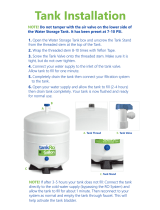 tankRo RO132-TNK User manual
tankRo RO132-TNK User manual
-
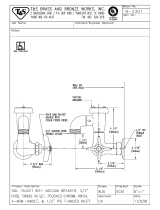 T & S Brass & Bronze Works B-2301 Datasheet
T & S Brass & Bronze Works B-2301 Datasheet
-
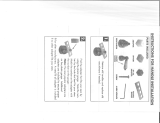 Pfister 130486 Installation guide
Pfister 130486 Installation guide
-
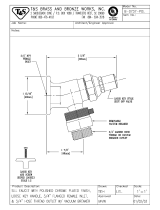 T & S Brass & Bronze Works B-0737-POL Datasheet
T & S Brass & Bronze Works B-0737-POL Datasheet
-
T & S Brass & Bronze Works B-0737 Datasheet
-
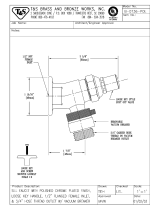 T & S Brass & Bronze Works B-0736-POL Datasheet
T & S Brass & Bronze Works B-0736-POL Datasheet
-
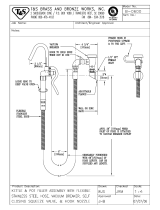 T & S Brass & Bronze Works B-0600 Datasheet
T & S Brass & Bronze Works B-0600 Datasheet
-
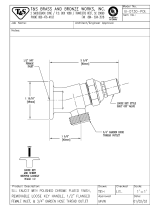 T & S Brass & Bronze Works B-0730-POL Datasheet
T & S Brass & Bronze Works B-0730-POL Datasheet
-
MasterCraft MX-1408 Owner's manual




















































